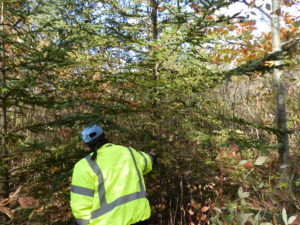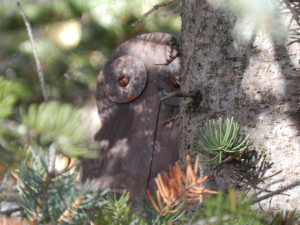Owl Prowl
Every year, mostly in the spring, my wife participates in the Owl Roost survey with the Braddock Bay Raptor Research Center (BBRRC). This year, in addition to the full-scale spring version, there's a fall survey. Today, I tagged along on a walk through Owl Woods to check for any owls roosting.
During the Spring migration, raptors flying north to their nesting grounds in Canada encounter a serious obstacle when they get here: the Great Lakes. These birds do not like to fly out over water unless they can see the other shore, and even Ontario, the smallest of the Great Lakes, does not afford them that comfort factor. So they tend to spend the night here (or day, as in the case of the nocturnal owls). This gives the researchers affiliated with BBRRC a great chance to check for roosting birds and count them. There's also a banding station that might be able to catch, band and release a few as they pass through.
We didn't find any today but that is not necessarily because there were none. To see a Saw-whet owl, the kind most commonly spotted there, takes a bit of experience and a bit of luck. They roost in spruce trees on branches at about eye-level, but they tuck themselves in very close to the trunk. For example, do you see this decoy saw-whet placed in a typical roost position, for training purposes?

In this picture, Jill has moved aside branches of the tree, which in real owl survey work, is simply not done. If you clicked on this page you got the FULL SIZE image, and maybe you saw it there. If not, here it is (below) zoomed in by my camera's optical zoom. This is at the trunk of the tree, and at a height roughly 8 in. (20 cm) above the top of Jill's blue cap.

So no, they are not easy to see, they are easy to miss. Regardless, you get a very nice walk in the woods for your trouble.


